If you’re a homeowner, likely as not you’ve experienced the frustration of seeing your yard dug up in holes, or even worse, you’ve stepped in one unexpectedly and nearly broken your ankle. Holes in your yard are not just an eyesore but a safety hazard. But in another way of looking at it, these holes are also a sign of life on your property. So in this article, we’ll look at what kinds of animals typically burrow in your yard, why they do it, and how to stop them if those signs of a thriving natural habitat are happening in a place where you don’t want them.
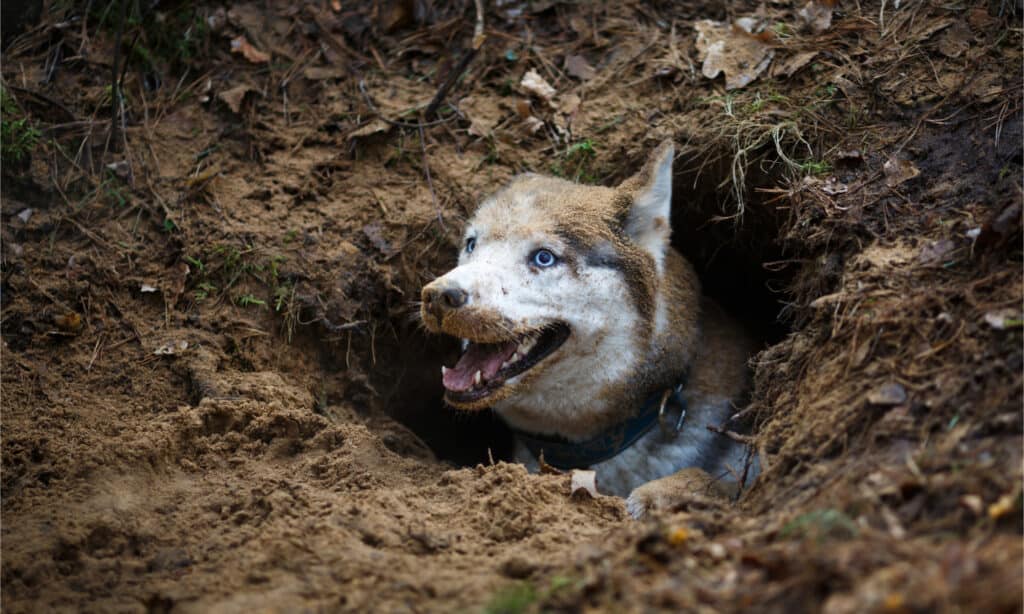
Holes in your yard might come from wild animals, or your own pets. Huskies are particularly prone to digging “dens” in the ground.
©Konstantin Tronin/Shutterstock.com
Why Do Animals Dig Holes?
Animals dig holes to help them meet their basic needs. Sometimes they’re in search of roots, bulbs, insects, worms, grubs, or ground-nesting mammals, birds, or reptiles. Animals carve out burrows or dens for themselves for shelter from the elements and protection from predators. This also gives them a safe place to care for their young until they’re old enough to fend for themselves. They might dig in areas with ground moisture during times of drought to cool off. They dig to hide acorns or uneaten portions of a kill to come back to later. They might dig to escape from an area or get to another area, such as digging under a fence. And certainly, when it comes to pets, digging can also be a sign of frustration and anxiety. A pet without enough mental and physical stimulation might work out its energy by digging some truly legendary holes.

Burrowing is a way some animals meet their basic needs for food, shelter, and protection from predators.
©Chaturong Krirkkriangkrai/Shutterstock.com
How to Tell What’s Digging in Your Yard
It’s not always easy to know what kind of animal might be digging in your yard. Many wild animals tend to come out around dawn and dusk, so if you sit quietly on your porch you might catch a glimpse of whatever it is. Video doorbells and motion-sensitive cameras can also capture videos of the culprits. Or you can notice the size and shape of tracks in mud or loose soil near the holes or identify the animal’s droppings based on pictures on the Internet or consulting with local wildlife officials. Here are some of the typical hole-digging wild animals found in many parts of the United States:
1. Moles
Moles are small mammals found in large areas of North America, Europe, and Asia. They live virtually their entire lives underground. They have soft, velvety fur, tiny eyes and ears, and strong shovel-like front limbs and paws that help them move dirt efficiently as they tunnel. They eat slugs, earthworms, and other kinds of invertebrates. A single mole can tunnel 18 feet an hour when soil conditions are right, creating enormous damage to a lawn.
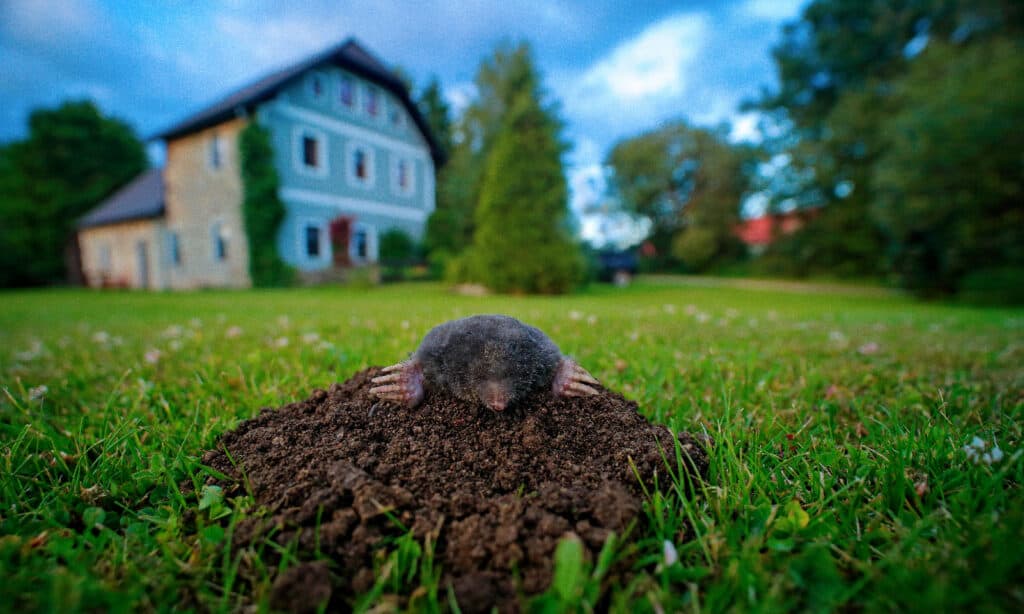
Moles can be an annoyance but they also eat slugs and some other invertebrates that are garden pests.
©Ondrej Prosicky/Shutterstock.com
2. Skunks
Skunks of course are known for their noxious musk that they use to mark territory and defend themselves from threats. Fortunately, each time they “spray” it takes 10 days for them to “recharge.” If skunks are digging in your yard, it is usually because they are looking for grubs to eat under the sod.
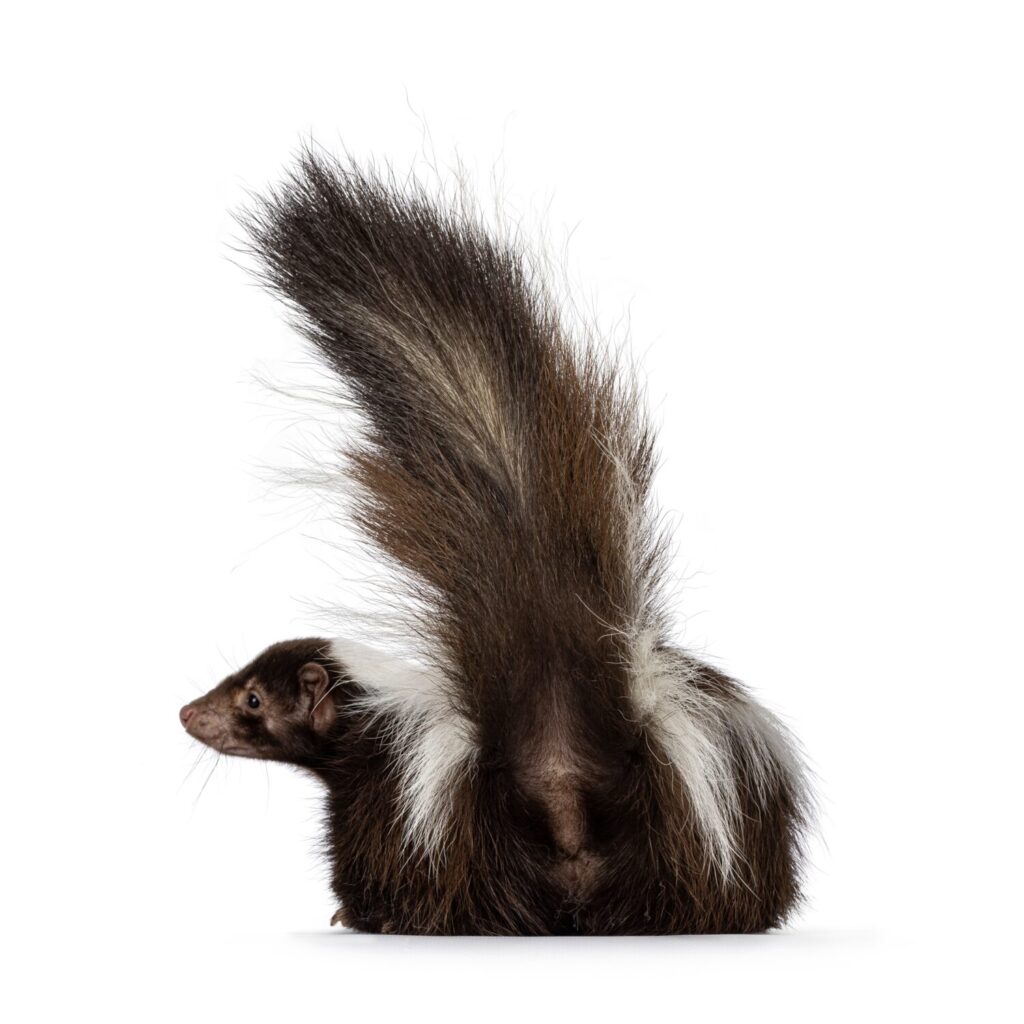
If you have a skunk digging in your yard, there’s a good chance your nose will let you know.
©Nynke van Holten/Shutterstock.com
3. Groundhogs
Groundhogs are also called woodchucks. They tend to dig around gardens looking for food: fruits, seeds, and vegetable matter. They also like to dig burrows for shelter near and under decks and crawlspaces of houses, garages, and storage buildings.
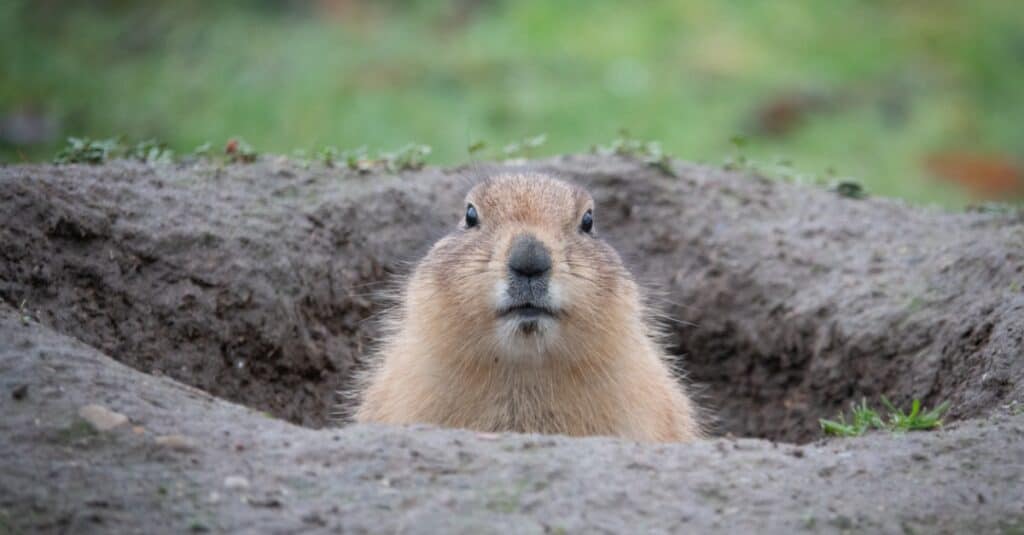
Groundhogs burrow under porches and house crawlspaces at times in order to create sheltered burrows for themselves.
©iStock.com/undefined undefined
4. Gophers
Gophers, or “pocket gophers,” are a common tunneling species similar to moles. You can spot the difference though in their visible eyes and ears, large cheek pouches, and long “buck tooth” incisors. There are many species of them and they can be quite a bit larger than moles. If you live in Washington State, note that there are 4 species of mazama pocket gopher that are protected. If you have them in your yard you should call wildlife officials to remove them rather than doing anything to harm them.
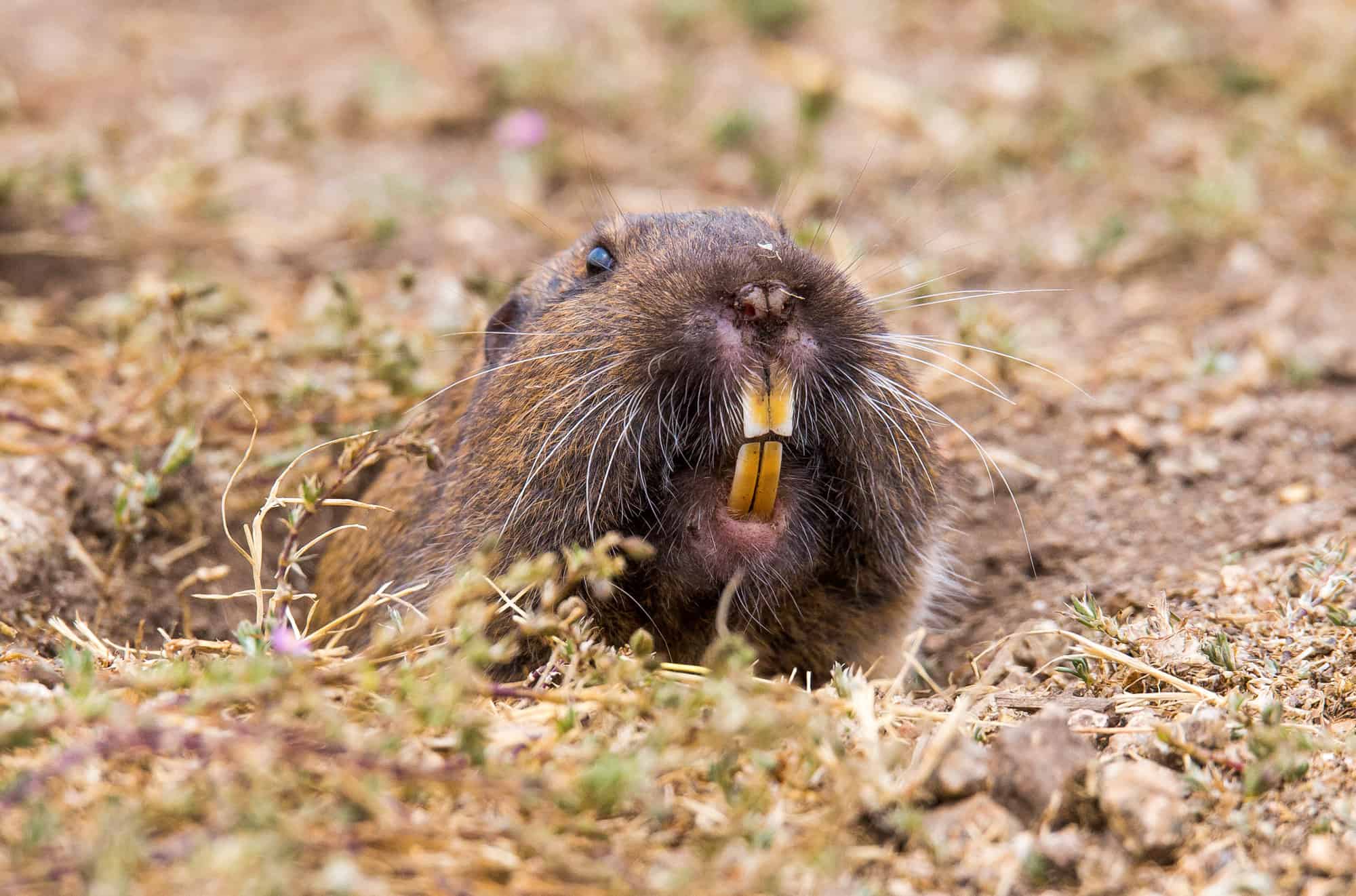
The eyes and teeth of this animal that digs holes is a dead giveaway that this is a gopher, not a mole.
©iStock.com/stevelenzphoto
5. Ants
Nearly every ant species creates underground systems of tunnels and rooms that can be complicated and extensive. While their work aerates the soil, it also creates unsightly anthills of soil that kill out patches of grass and leave bare spots behind. Their tunnels can cause the soil to dry out and kill grass as well.
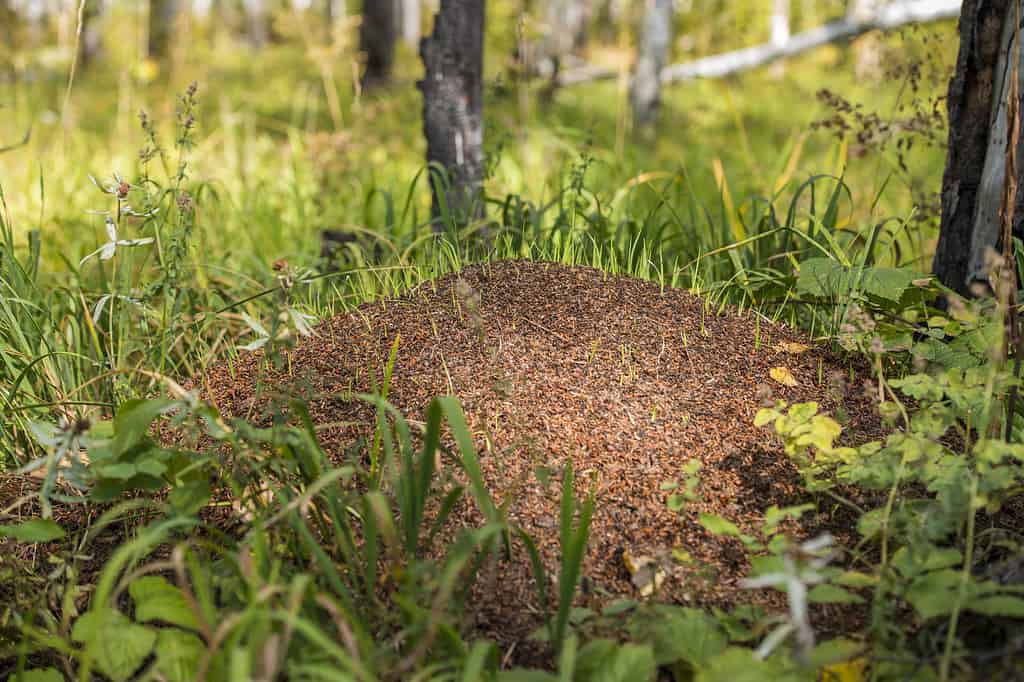
Ant hills can become large and unsightly.
©iStock.com/markhonosvitaly
6. Owls
Burrowing owls can build their own underground homes, but they often take over burrows built by prairie dogs, squirrels, or other digging animals. They can also create nests in PVC pipes, buckets, or other tunnel-like secluded spaces in human architecture. They use their borrows not only for housing but food storage. In some examples, a homeowner has discovered an owl’s nest along with dozens of decomposing rodents.
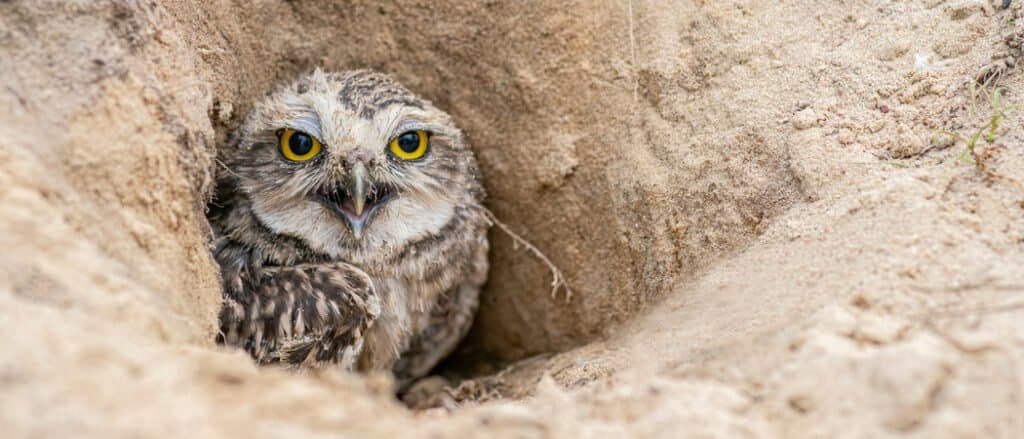
Burrowing owls can make their own nests but often take an easier route by stealing a burrow from another species or nesting in small hidden spaces in human architecture.
©Albert Beukhof/Shutterstock.com
7. Chipmunks
Chipmunks are small, energetic little rodents that will dash across your yard so fast you’ll miss them if you blink. They have strong little legs for scampering across your yard and running up trees. They love to pack their extendable cheeks full of food, looking like they’re playing jazz trumpet. Among the animals that dig holes in your yard, this has got to be the cutest.
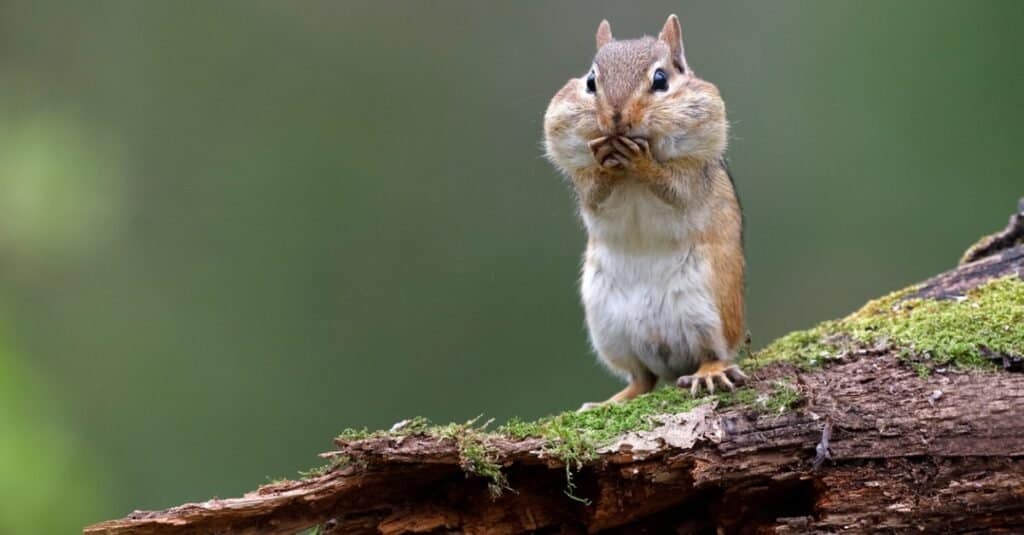
Here’s an eastern chipmunk with cheeks full, charging up on energy for a day of hard work and play.
©iStock.com/BrianLasenby
8. Armadillos
Armadillos live mainly in the southern United States and in Central America. They are covered in leather-like armor and have claws designed for digging. They live in forested areas close to a water source like a stream or pond. They come out mainly at night. They dig burrows that can be 15 feet long, and as they are relatively large creatures, those borrows can even cause cement sidewalks to collapse.

Armadillos dig such large and extensive tunnels, they can cause cement sidewalks to collapse.
©guentermanaus/Shutterstock.com
9. Rats
Some species of rats prefer to live high off the ground, in trees or attics for example, while others such as the Norway rat burrow near foundations and under shrubbery. Family groups establish new burrows in the summer and fall. As the rats multiply, they add additional tunnels and rooms to accommodate their rapidly growing family. They usually dig down as far as 18 inches, but if they are tunneling next to a foundation, they will go down as deep as four feet to get under the foundation and up into the house.

Norway rats, also known as brown rats, originated in China, but because of international sea trade have been able to spread to every continent now except Antarctica.
©JaklZdenek/Shutterstock.com
Stopping Wild Animals from Digging in Your Yard
Here are some general suggestions that might help protect your yard from digging wild animals:
- Remove sources of food, water, and shelter from the yard. Don’t leave out food and water for your dog or cat overnight when it might attract wild animals.
- Apply beneficial nematodes to your yard to control grubs that are a food source for many burrowing animals.
- Regularly seed your lawn with types of grass that have deep root systems. Thick, deeply-rooted turf is harder for burrowing animals to dig through.
- Bury chicken wire or wire mesh around areas you particularly want to protect, such as flower or vegetable gardens.
- Use motion-activated lights, sprinklers, or sonic spikes that make high-frequency noises to deter digging critters.
- You can protect certain plants or areas of the yard by putting down a mixture of water with cayenne pepper, garlic powder, or coffee. Some coffee shops bag up used coffee grounds for customers as they are good for the soil, bad for digging animals, and make your garden smell great!
- Plant marigolds, alliums, daffodils, and others that are effective at repelling some animals, like moles.
- Use solar repellants that use solar power to put out low-frequency sounds that scare off diggers.
- Note that remedies like castor oil or mothballs don’t actually kill digging animals, but just incentivize them to dig alternative tunnels.
- Flushing water down holes and tunnels is an effective way of drowning ants, but may need to be done repeatedly to get them all. Flooding tunnels of moles and other animals is unlikely to drown them but can drive them to the surface, where they can be captured or killed.

Marigolds and some other flowers have a strong odor that repels some animals that dig while smelling and looking pleasant to humans. You can’t lose trying this method.
©iStock.com/svf74
What About Digging Dogs?
Dogs might dig to try to escape your yard, to create a place to lie in the cool dirt or take shelter from wind, to hide toys or treats, or to occupy themselves when they’re bored. Although any dog can become a digger, some of the breeds particularly noted for digging are the Jack Russell terrier, dachshund, Alaskan malamute, beagle, and miniature schnauzer.

Jack Russell terriers have a particular propensity for digging holes.
©iStock.com/damedeeso
How to Stop Your Dog From Digging
Because you don’t want to drive your dog away from your yard, some of the approaches you use to stop them from digging holes will be different from how you would deal with wild animals that dig. It’s especially important with dogs to understand the purpose of the behavior and how to provide healthy alternatives for fulfilling their needs for food, shelter, security, entertainment, etc.
- Bring the dog inside more often. They may be lonely for your company or uncomfortable in the yard because of the temperature or something that frightens them.
- Provide them with a doghouse or other outdoor shelter to retreat to in order to help them feel safe, comfortable, and protected.
- If your dog is hot or thirsty, provide plenty of water in an un-tippable bowl. Turn on a sprinkler now and then if your dog likes water, to help them cool down.
- Try setting aside a special place where digging is allowed. Under a deck or under vegetation in a less-visible part of the yard, for example.
- If your dog is digging along a fence, are they trying to escape something in your yard? A sonic anti-barking device used by you or your neighbor, for example, can frighten some dogs to the point they will try to escape.
- Is your dog trying to get to the neighbor’s dogs? Plan some doggie play dates if they’re friendly; otherwise, look for opportunities for your dog to socialize with other dogs at a dog park or doggie daycare.
- Does your dog want to catch smaller wildlife that runs across the yard and under the fence? You can bury chicken wire at the base of the fence with the sharp edges turned away from your yard; you can lay chain link fencing on the ground near the fence to make the ground uncomfortable to walk on, or you can partially bury large rocks along the fence line.
- Provide more dog toys and puzzles that will keep your dog occupied. And find time to throw a ball or frisbee or do other activities with your companion.
- Cover existing digging spots with chicken wire or rocks.
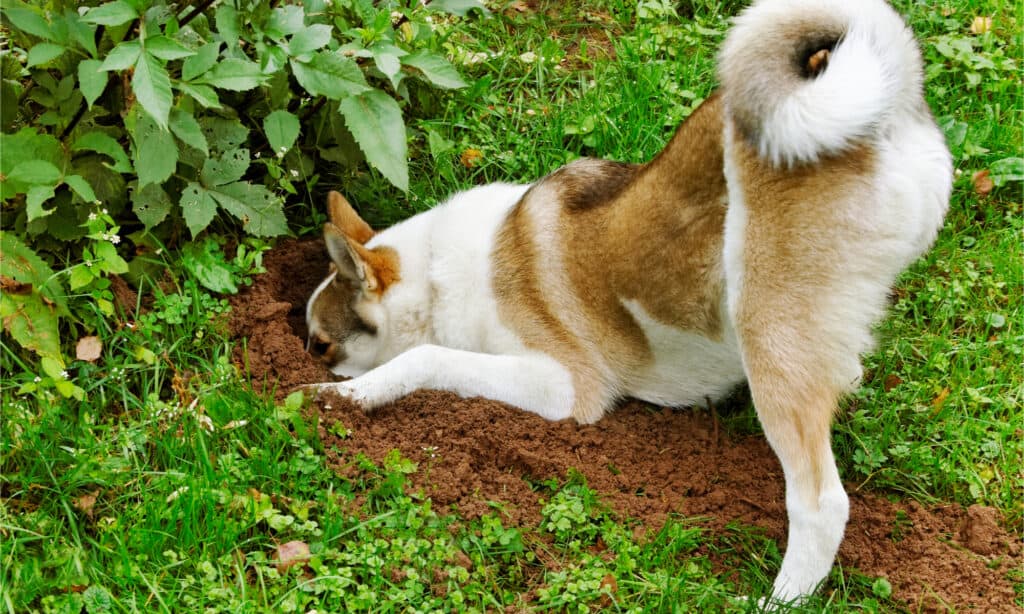
To stop a dog from digging, try to understand the reasons for the behavior and provide healthy alternatives.
©Ratikova/Shutterstock.com
Putting It All Together
Animals that dig holes in your yard can be a sign that you’ve created an ecosystem there that is attracting wildlife. If that’s one of your goals, then you have decide whether you can live with the ocassional hole or soft spot in the yard from underground burrows. If your dog is digging and having fun, its in an out-of-the-way part of the yard, and it’s not so dirty you have to give it a bath every night, then maybe that behavior is something you can live with as well. But if you’re attracting dangerous or unpleasant animals like rats or skunks there are plenty of easy things you can try to deter them and keep your yard looking nice and vermin-free.
The photo featured at the top of this post is © iStock.com/undefined undefined
Thank you for reading! Have some feedback for us? Contact the AZ Animals editorial team.






